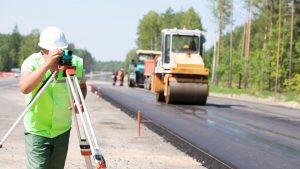When COVID-19 first arrived in North America six months ago, common touch areas were believed to be the main cause of infection spread. The public was advised to wear gloves, disinfect surfaces, wash food purchases and refrain from physical contact.
While those cautions may still be valid today, the focus of viral spread has more recently shifted to airborne transmission.
On June 16, the Centers for Disease Control (CDC) updated its website , drawing attention to the implications of airborne transmission.
“The virus is thought to spread mainly from person-to-person…through respiratory droplets produced when an infected person coughs, sneezes, or talks. These droplets can land in the mouths or noses of people who are nearby or possibly be inhaled into the lungs.”
Sadly, decision-makers at the highest level were aware of the airborne dangers months before.
U.S. President Donald Trump admitted as much in his interview with U.S. journalist Bob Woodward on Feb. 7, 2020.
“You know, the touch, you don’t have to touch things. Right? But the air, you breathe the air and that’s how it’s passed,” he said.
Surface cleaning, facemasks and correct distancing remain critical components in a virus-free building environment and are relatively easy to manage. Dealing with air quality is more complex, however, and brings a new area of technical expertise to the forefront.
The result is that owners and landlords across the entire span of the residential, commercial and institutional building industry are now scrambling to find ways to keep indoor environments safe in order to gain the trust and confidence of tenants and occupants.
Buildings need to be tested for COVID-19 just like humans, not just once but regularly.
That’s because, as the CDC advises, “Transmission of coronavirus occurs much more commonly through respiratory droplets than through objects and surfaces, like doorknobs, countertops, keyboards, toys, etc.”
However, even after airborne transmission, risks remain. The CDC says that SARS-CoV-2 can remain viable on surfaces made from a variety of materials for hours and even days.
Technical solutions for improved air quality in existing buildings vary based on structure type, size and age. Furthermore, going forward, no new building can proceed successfully unless air quality is addressed in a proactive manner.
Under standards earlier established by the American Society of Heating, Refrigerating and Air-Conditioning Engineers (ASHRAE), HVAC filtration ratings must achieve a minimum MERV (Minimum Efficiency Reporting Value) rating of six. That isn’t good enough anymore.
Droplets less than three microns in size carrying the coronavirus can pass through. A minimum MERV rating of 10 is now recommended.
Fresh air replacement and HVAC filtration systems need to be managed, particularly given concerns over the energy consumption of these devices as usage increases. Fortunately, IoT solutions are available to answer those concerns.
BrainBox AI, based in Montreal, for example, claims its technology autonomously optimizes energy use in HVAC and air conditioning control systems. In fact, the company claims energy consumption can be reduced by 25 per cent and reduce the resultant carbon footprint by up to 40 per cent, while improving occupant comfort by an estimated 60 per cent.
According to BrainBox, their technology collects hundreds of thousands of data points, such as outside temperature, sun/cloud positioning, fan speed, duct pressure and more. Then, using over two dozen algorithms, its AI engine directs the building’s HVAC operations for optimal efficiency.
Some experts suggest that, in addition to improvements to MERV ratings in HVACs, bi-polar ionization (BPI) devices be added to existing air supply ducts. These are relatively simple to install at costs ranging from US$900 to US$3,000. However, ASRAEhh rrr
HRAE wants more research before they are convinced of BPI’s effectiveness.
What ASHRAE does favour, however, is increased fresh, filtered air entering the building from outside — even overnight purges of the building’s interior air.
That, in combination with improved HVAC filtration levels and the installation of portable HEPA units or UV-C (ultraviolet) lights where required, could significantly reduce infectious COVID aerosols.
Bring on the airheads!
John Bleasby is a Coldwater, Ont.-based freelance writer. Send comments and Inside Innovation column ideas to editor@dailycommercialnews.com.











Recent Comments
comments for this post are closed